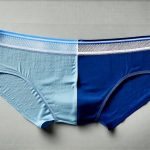Bladder irritation can significantly impact daily life, causing discomfort, urgency, and even pain. While managing this condition often involves medical interventions and lifestyle adjustments like dietary changes and fluid intake management, the clothing we choose to wear plays a surprisingly important role. Many individuals experiencing bladder sensitivity find that certain fabrics and styles can exacerbate their symptoms, while others offer comfort and reduce irritation. Understanding how clothing affects bladder health isn’t about finding a ‘cure,’ but rather about minimizing factors that trigger discomfort and maximizing overall well-being. This article will explore practical clothing choices for people navigating the challenges of bladder irritation, focusing on materials, fit, and style considerations to help you feel more comfortable and confident in your everyday life.
Choosing the right clothes isn’t just about aesthetics; it’s about creating a supportive environment for a sensitive system. Tight-fitting garments can put pressure on the bladder and pelvic floor muscles, potentially worsening symptoms. Conversely, loose clothing allows for better airflow and reduces friction, minimizing irritation. It’s important to remember that sensitivity levels vary greatly from person to person, so what works for one individual may not work for another. This means a degree of experimentation is often necessary to discover the most comfortable options for your specific needs. The goal is to find clothing that doesn’t add stress to an already sensitive system and allows you to live life fully without constant worry about flare-ups.
Fabric First: Prioritizing Gentle Materials
The material a garment is made from is arguably the most crucial factor when choosing clothes for bladder irritation. Synthetic fabrics, while often inexpensive and durable, can trap heat and moisture, creating an environment that promotes bacterial growth and potentially irritates the sensitive skin around the pelvic region. This trapped moisture can also exacerbate existing inflammation or discomfort. Breathable natural fibers are generally a much better choice.
- Cotton is a popular option due to its softness and affordability. However, conventional cotton can sometimes be treated with chemicals during processing, which might cause irritation for some individuals. Organic cotton minimizes this risk as it’s grown without pesticides or harsh chemicals.
- Linen is another excellent natural fiber known for its breathability and quick-drying properties. It’s a strong fabric that holds up well to washing and provides a comfortable feel against the skin.
- Silk, while more luxurious, can also be beneficial due to its smooth texture and hypoallergenic qualities. However, it’s important to consider silk’s delicate nature and care requirements.
Avoid materials like rayon, nylon, polyester, and spandex as much as possible, especially in undergarments and clothing that comes into direct contact with the pelvic area. If you must wear synthetic fabrics (for example, during exercise), look for moisture-wicking options designed to draw sweat away from the skin. Always prioritize natural fibers when choosing clothing worn close to the body.
Beyond the main fabric, pay attention to details like seams and elastics. Rough or scratchy seams can cause friction and irritation, so opt for garments with flatlock seams or seamless construction where possible. Similarly, tight elastic waistbands in underwear or pants can put pressure on the bladder; choose options with soft, wide elastic bands or drawstring closures that allow for a more comfortable fit.
Undergarments: A Foundation of Comfort
Underwear is perhaps the most important clothing item to consider when managing bladder irritation. The close proximity of undergarments to the sensitive pelvic area makes fabric choice and fit particularly crucial. Avoid tight-fitting briefs, thongs, or anything with restrictive seams. Instead, opt for:
- Loose-fitting cotton underwear – this provides maximum breathability and minimizes pressure.
- Underwear made from organic cotton – reduces exposure to potentially irritating chemicals.
- Boxer shorts (for both men and women) – offer a looser fit than briefs, allowing for better airflow.
- Seamless or flatlock seam underwear – eliminates friction points that can cause irritation.
Consider avoiding underwear altogether at night if you find it exacerbates your symptoms. Allowing the pelvic area to ‘breathe’ overnight can provide significant relief. If leakage is a concern, explore options like washable absorbent underwear designed for incontinence as a more comfortable alternative to disposable products. Prioritize comfort and breathability above all else when selecting undergarments.
Pants & Bottoms: Fit and Freedom
The same principles of fabric choice apply to pants and other bottom garments. Tight-fitting jeans, leggings, or trousers can constrict the bladder and pelvic floor muscles, potentially worsening symptoms. Instead, choose options that offer a looser, more comfortable fit. Look for:
- Wide-leg trousers – allow for maximum airflow and freedom of movement.
- Skirts and dresses – provide excellent ventilation and reduce pressure on the pelvic area.
- Pants made from soft, breathable fabrics like linen or cotton – prioritize natural fibers over synthetic materials.
- Drawstring waistbands or elasticated waists that aren’t too tight – avoid constricting the abdomen.
If you prefer to wear jeans, choose a relaxed fit and consider layering with loose-fitting underwear underneath for added comfort. Avoid low-rise styles, as they can put pressure on the pelvic floor. Remember that layers are your friend; you can always adjust your clothing based on your symptom levels.
Avoiding Irritating Details: A Closer Look
Beyond fabric and fit, certain details in clothing construction can contribute to bladder irritation. Pay attention to these often-overlooked aspects:
- Waistbands: As mentioned previously, tight waistbands are a major culprit. Opt for soft, wide elastic bands or drawstring closures that allow for a comfortable, adjustable fit.
- Seams: Rough seams can rub against the skin and cause irritation. Look for garments with flatlock seams or seamless construction whenever possible.
- Embellishments: Beads, sequins, or other embellishments can create friction and pressure. Choose simple designs without excessive ornamentation.
- Dyeing processes: Some dyes used in clothing manufacturing can contain chemicals that irritate sensitive skin. Consider washing new clothes before wearing them to remove any residual dye.
- Laundry detergents: Harsh laundry detergents can leave behind residue that irritates the skin. Use a mild, fragrance-free detergent and avoid fabric softeners, which can also be irritating. Be mindful of even seemingly small details as they can collectively impact your comfort.
Ultimately, finding the best clothing choices for bladder irritation is a personal journey. Experiment with different fabrics, fits, and styles to discover what works best for you. Pay attention to how your body responds to different garments and adjust your wardrobe accordingly. Remember that comfort is key, and prioritizing gentle materials and loose-fitting designs can significantly improve your quality of life. Don’t hesitate to consult with a healthcare professional or pelvic floor therapist if you have concerns about bladder irritation or need guidance on managing your symptoms.





















